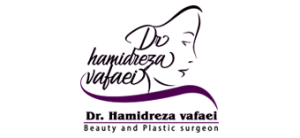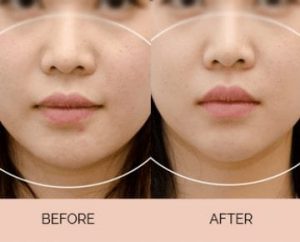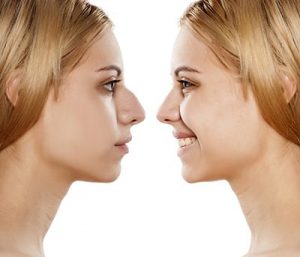Jaw reshaping surgery
A well-defined jaw enhances facial beauty and implies youth, vigor, and attractiveness. The lower face is one of the main areas patients are interested in improving when they seek facial rejuvenation. However, there is a delicate balance between a well-contoured jawline and a heavy set, square jaw. For individuals whose facial aesthetics are affected by an overly prominent jaw or lower third of the face, jaw reduction surgery, also known as jaw shaving, offers a permanent surgical method of reducing the outer portion of the jaw to narrow it and make it more proportionate with the rest of the face. It is a popular procedure among individuals of the Asiatic origin or those who seek a more feminine looking or slender jaw. Surgeons often reshape the jawline from a “U” shape to a “V” shape.
Why Do I Have A Large Jaw?
You need to know that having a large jaw is not just about one factor. Lots of factors are involved in having a specific jaw shape, and it is essential to know the factors behind it before undergoing an enhancement procedure.
These factors are including:
- Genetically-inherited
A broad jaw is commonly a genetically-inherited trait. If the characteristics that can be found in your family are active or square jawline, then it is only natural to have the same shape of that jaw.
- Disorder
Aside from natural factors, large jaws can also be caused by disorders. One such condition is called TMJ or Temporomandibular Joint Disorder; this condition is also known as Bruxism. Those people who are suffering from this condition clenches or grinds his/her teeth at night in a repeated manner. This repeated action leads to a strengthened and enlarged jaw muscles, known as Masseter muscles, that leads to a wider-looking jaw. Think of how muscles grow after spending months on the gym, and you’ll get the idea of how Bruxism causes enlarged jaw muscles to a person.
- Chewing Habits
The root can be the causes of enlarged muscles in the jaw and it may also come from eating habits. Examples of these habits are regular chewing of hard and chewy food and the repeated chewing of gum that causes strain on the Masseter muscles. The increased size of muscles in the jaw is known as Masseter Hypertrophy. Large jawbones, and not enlarged jaw muscles, usually call for a surgical procedure instead of the non-surgical methods.
Who Is an Ideal Candidate for Jaw Shaving?
The most suitable candidates for jaw shaving surgery may share the following characteristics:
- A strong or overly conspicuous jaw that is disproportionate with the rest of the face
- A round and wide jaw
- An elongated jaw
- A flat lower jawline
Those considering jaw reduction surgery should also:
- Be in a good state of physical and mental health
- Have made the decision to undergo surgery for themselves and no-one else
- Have realistic expectations of what surgery can achieve
What to Expect During Surgery?
Jaw reshaping is a relatively quick and straightforward procedure, taking something between 30 minutes and one hour to be done. The following steps outline what happens during surgery.
- General anesthesia
Jaw reduction surgery generally requires general anesthesia. Your surgeon will instruct you on fasting conditions prior to surgery: it is likely you will be asked to eat nothing for around 8 hours before your procedure.
- Incisions
Your surgeon will make intraoral incisions inside your mouth, so no scarring is visible on the outside of your face.
- Removal of excess bone/muscle/fat
A micro-saw or laser saw is used to cut the marked areas of prominent bone, and reshape the jaw contour. The saw is curved to achieve a well-rounded contour. Laser saws boast the advantage of less damage to nearby tissue and cells, less bleeding, and a reduced probability of cracks in the jaw bone. In some cases, a cortical fracture may be performed to surgically remove the outer layer of the jaw bone. In other cases, individuals who have an excessively developed masseter muscle will have this muscle removed. Some subcutaneous fat may also be removed to further thin the jawline.
- Stitches
The incisions are closed with dissolvable stitches. Once you have awoken and your nurse is confident that you have recovered from the effects of anesthesia, you will be discharged to go home.
What Are the Side Effects of Jaw reshaping Surgery?
Since the jaw reshaping procedure is a delicate operation, there will be several side effects after the whole process of operations has been done. But most of these side effects are manageable and will not cause any severe implications for the patient as long as the patient follows the advice of the surgeon.
Here are the procedure’s side effects that you need to know:
- Possible development of Seroma. It creates a blister-like appearance that is caused by the pooling of liquids under the skin.
- Patients should not worry about this condition because seromas dissolve naturally.
- It is one of the most common side effects after any type of surgery. Your surgeons might advise painkillers up to seven days after the surgery.
- Facial paralysis. When the nerves around the patient’s face or jaw are damaged during the surgery, this condition can occur.
But this condition is a rare case and doesn’t happen often.
- One of the primary causes of infection is poor hygiene.
Even with a regular intake of antibiotics, infections can still occur if the patient cannot maintain basic preventions such as hygiene.
- Blood Clothing around the area. This side effect can be easily avoided by the patients as long as they follow the post-operative instructions by their surgeon
What Should I Do After The Surgery?
- You will be placed on a liquid diet that may last for seven to ten days. In the meantime, you will be prohibited to eat your favorite food that requires extensive chewing for your mouth. But you can resume on this hard food three to four weeks after the surgery.
- Do not skip your surgeon’s follow-up checkups. Never miss a single schedule because it will ensure that your healing is positively progressing according to your surgeon’s expectations. It will also prevent any complications from growing by detecting it early through the scheduled follow-up checkups.
- Use anti-bacterial mouthwash regularly to disinfect your mouth.
- Keep your head elevated to prevent swelling. It is advised to use an extra pillow for additional comfort while lying down.
- Be careful while washing your face and hair. Prevent causing any trauma to your mouth or jaw area. To help in reducing the swelling of your face, you will be advised by the surgeon to wear a jaw-bra or an elastic facial dressing.
- Avoid activities that will or may cause too much stress on your face, such as strenuous exercises, to avoid hurting yourself. Keep this precautionary measure up to a month.









Leave a Reply
Want to join the discussion?Feel free to contribute!